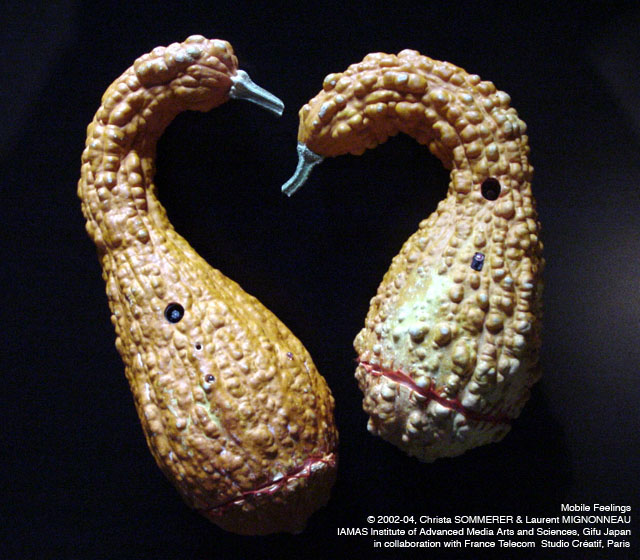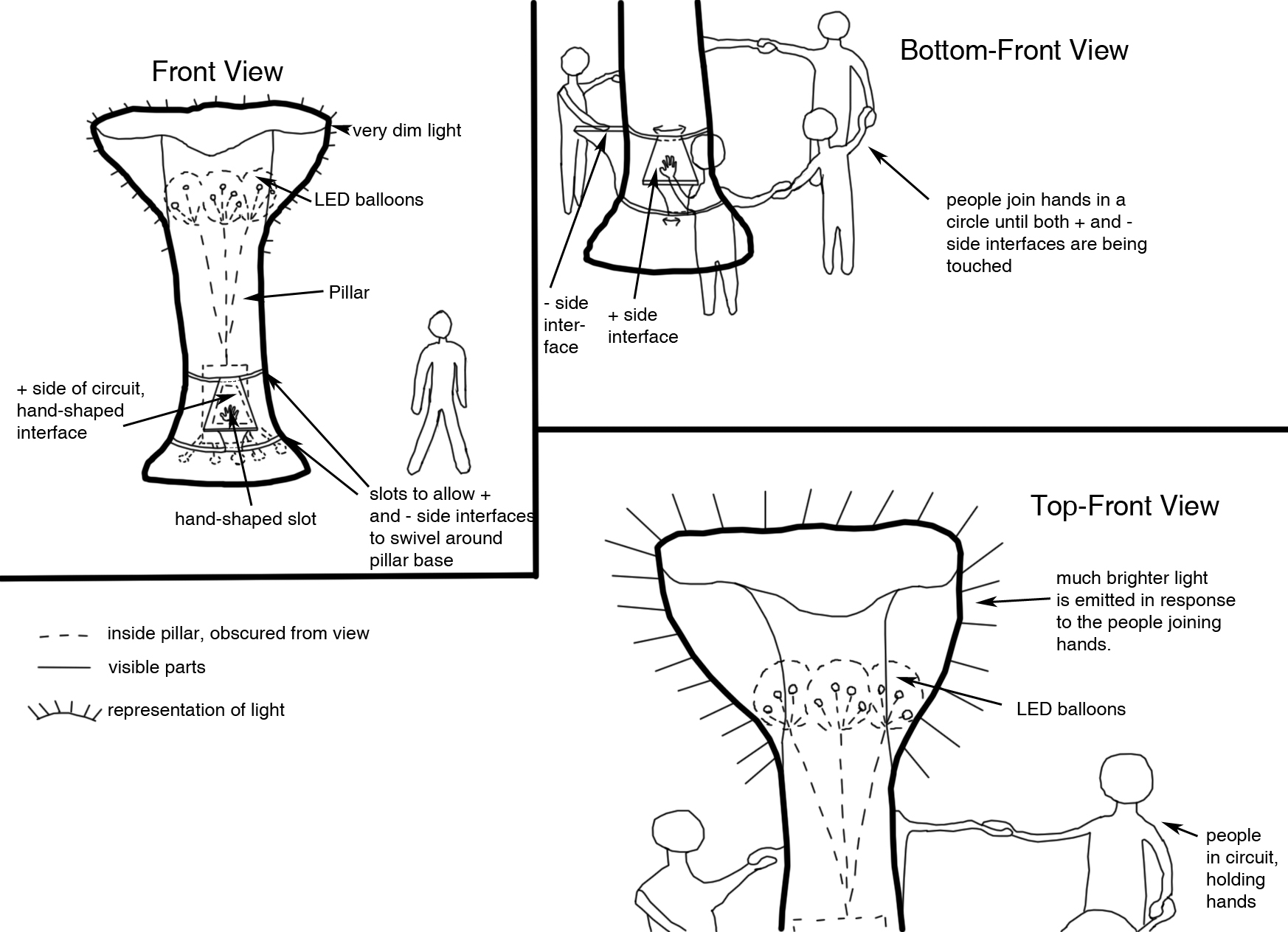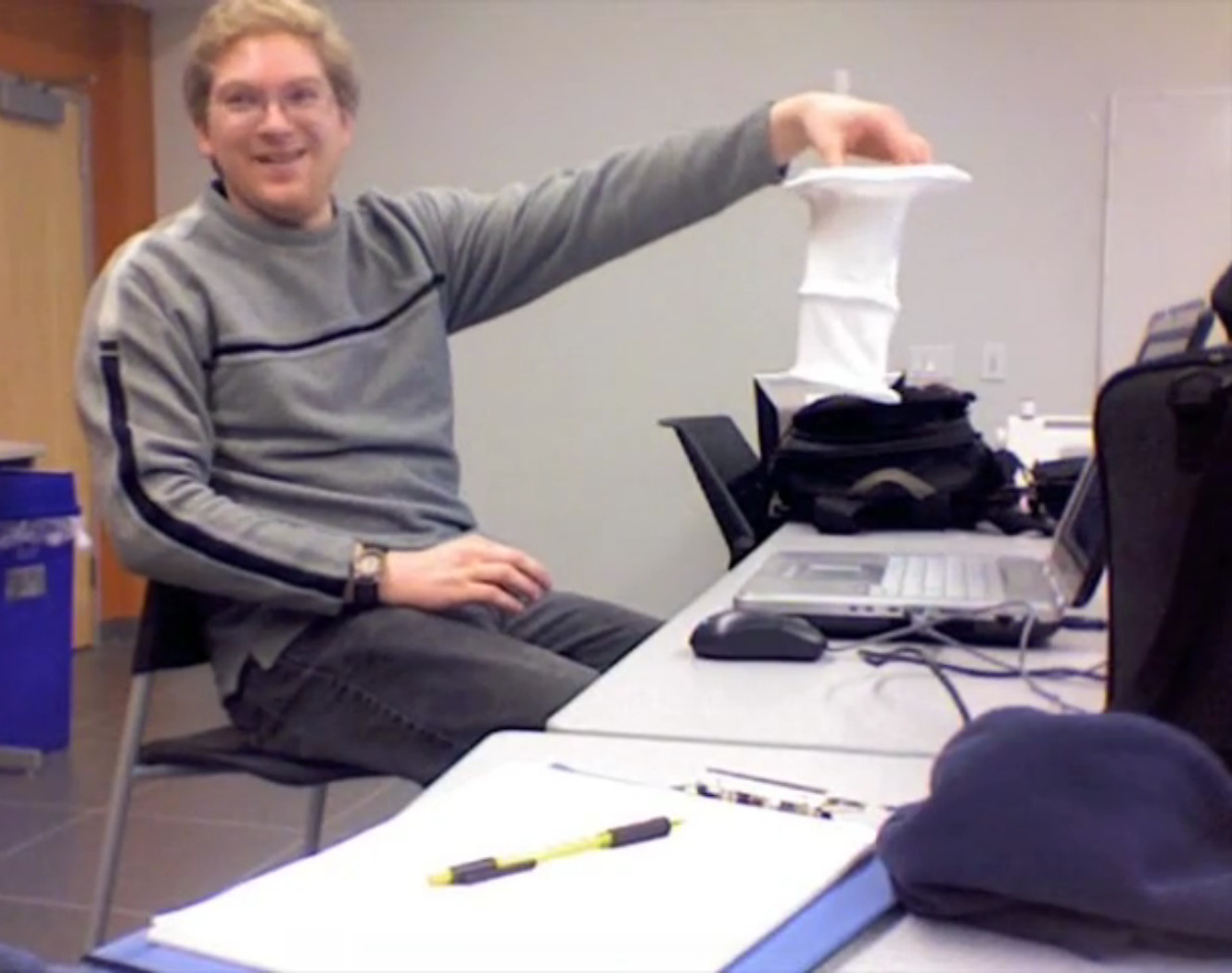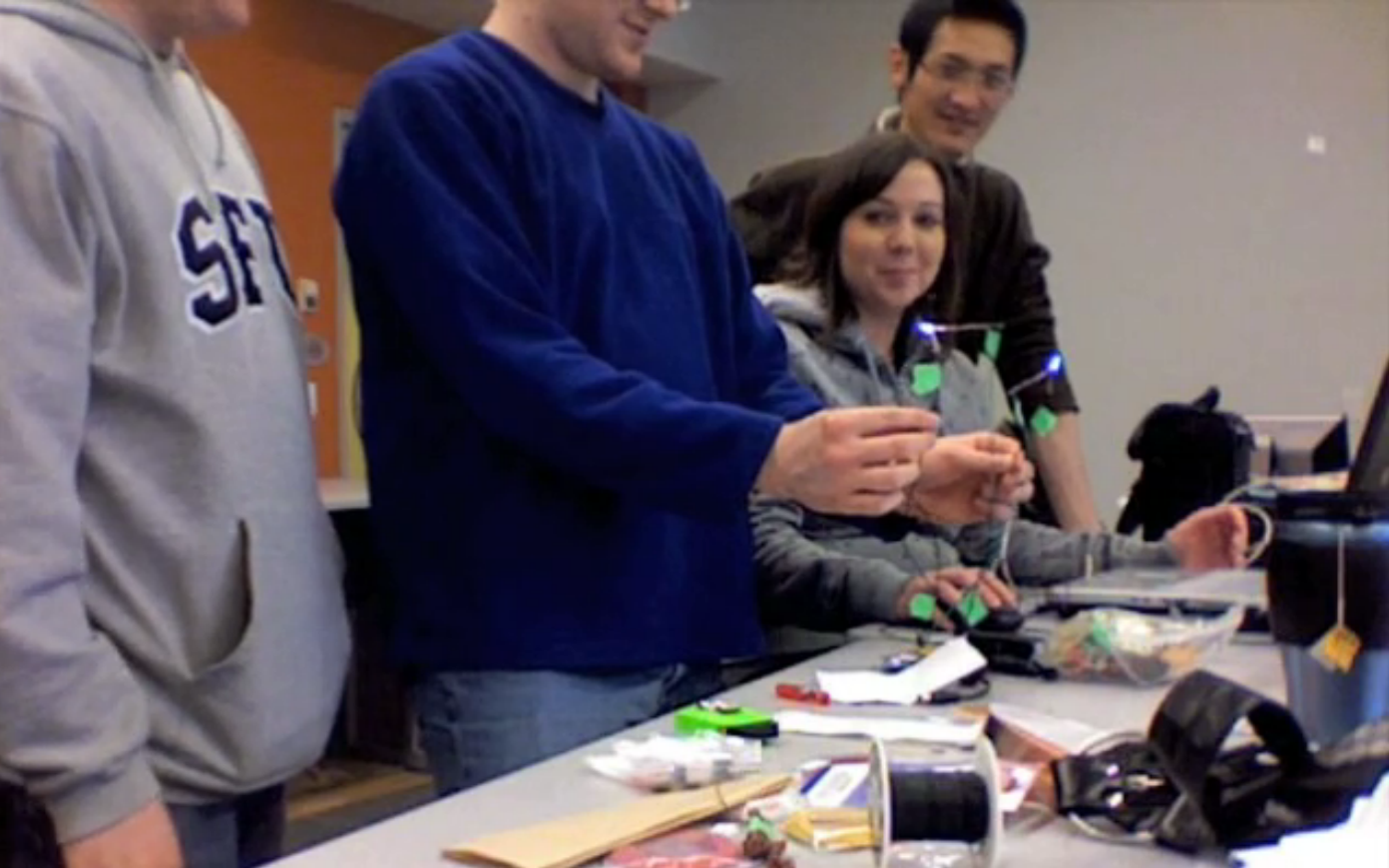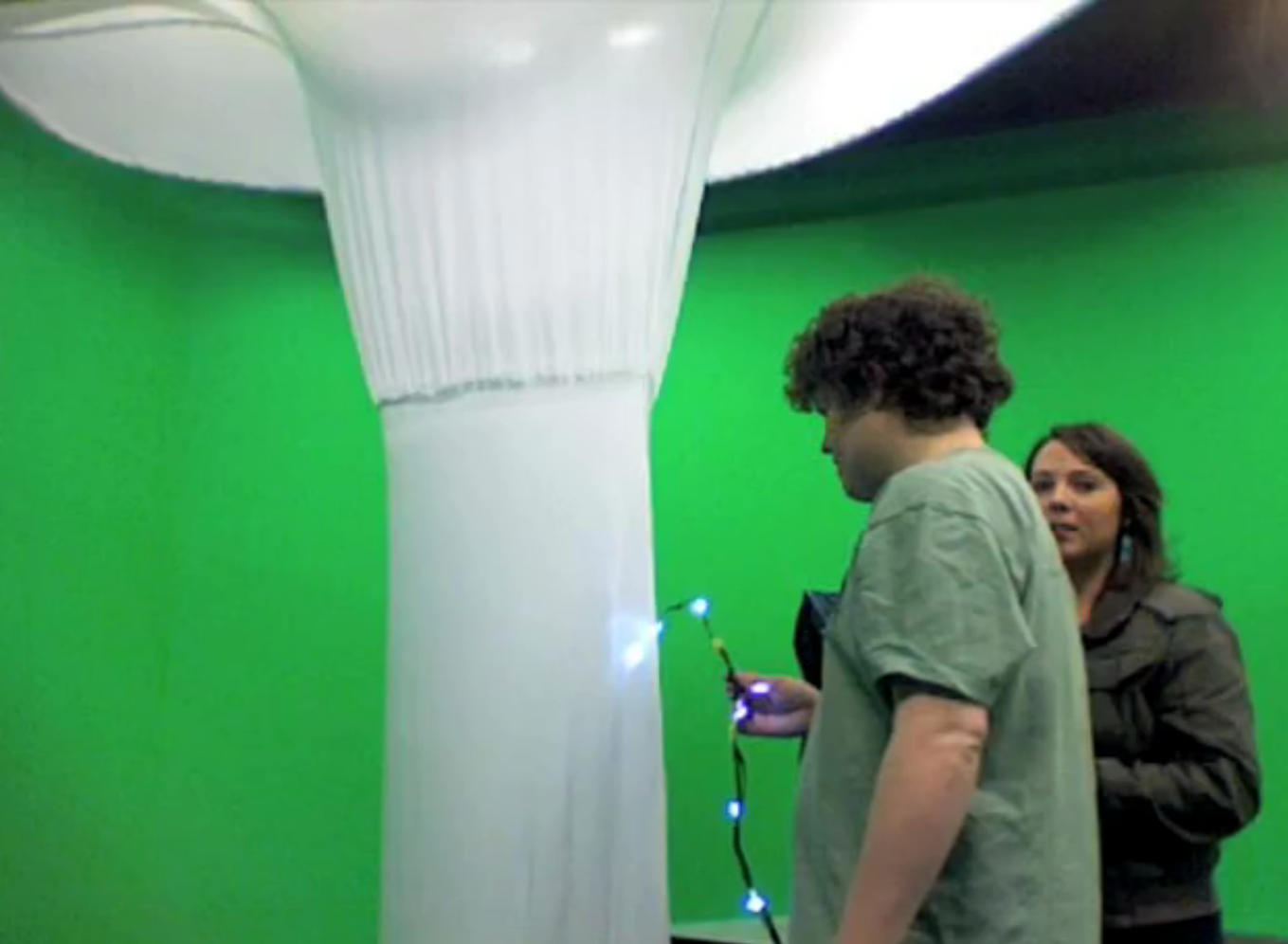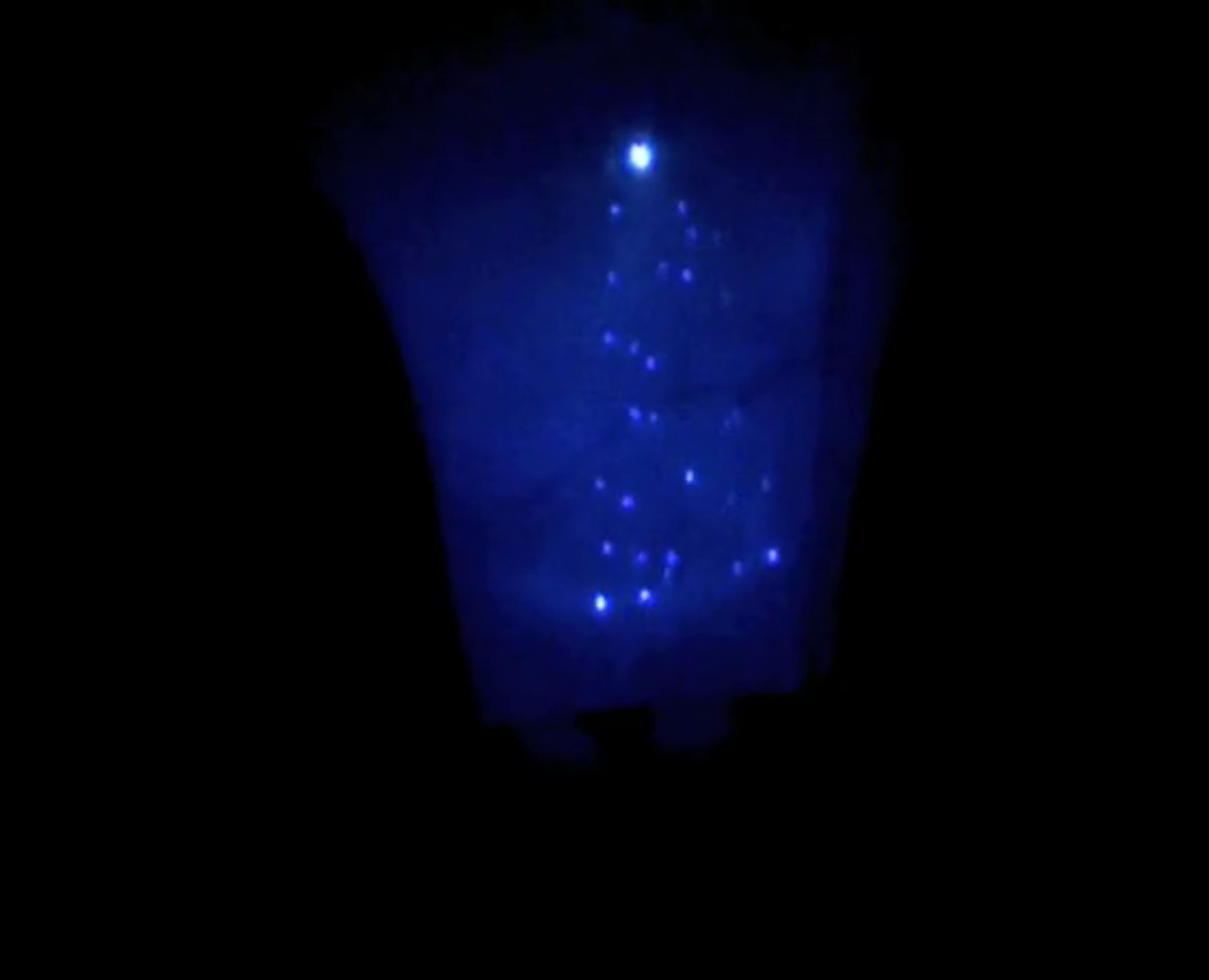Noster Nostri

An interactive, touch-controlled light exhibit that creates a shared experience
Design Process
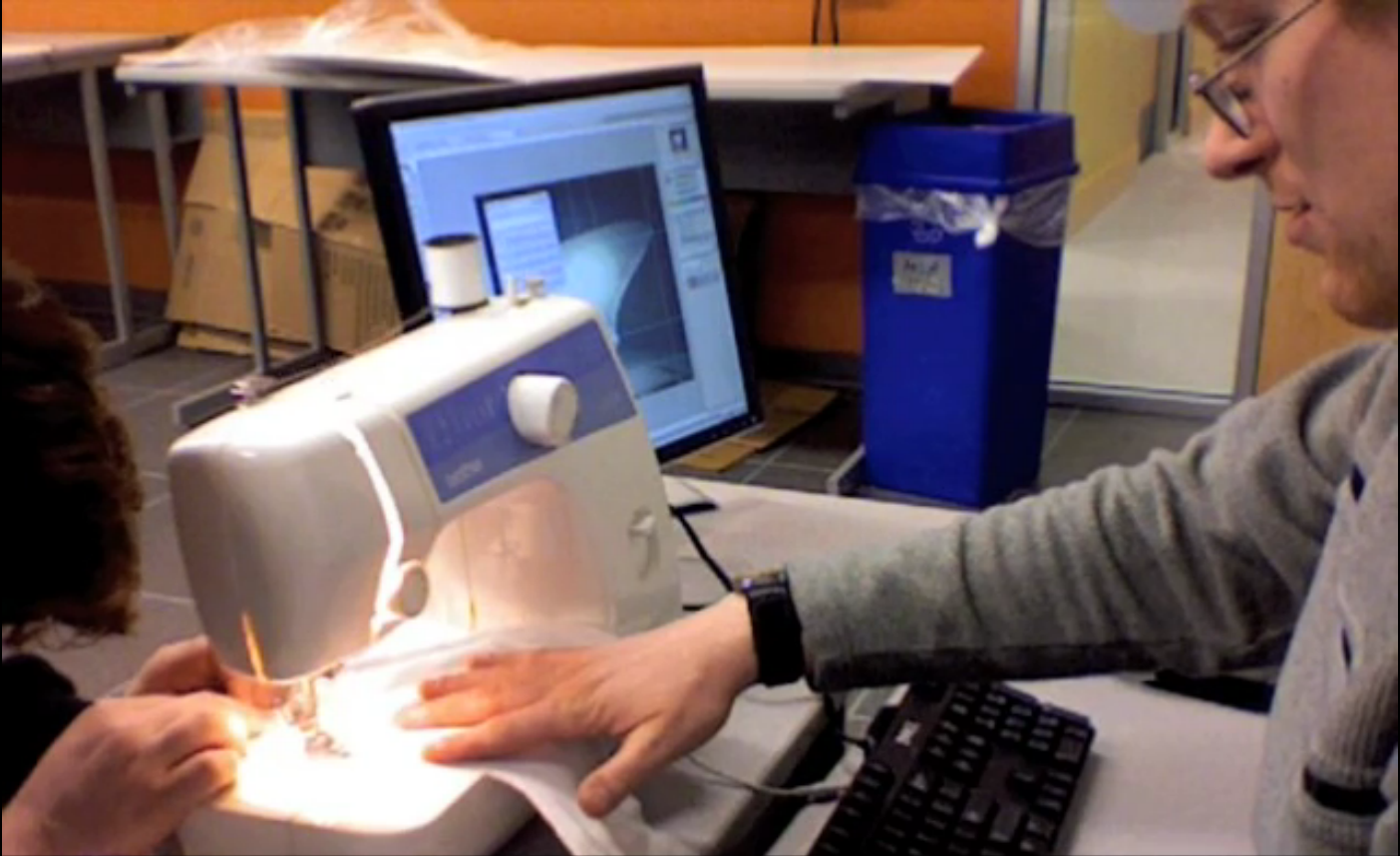
We combined many precedent studies of other designers’ work that we were familiar with: my contribution was the immersive environments and interactive ecosystems by Sommerer and Mignonneau (Mobile Feelings in particular), which led to the idea of using GSR input (skin conductivity). GSR input can be loosely thought of as “emotional” input, since changes in emotional state change GSR levels, which we intended to use as a “heartbeat” that would change as more people join the interaction, making it shared.
To get more clarity on our emerging concept, we went through a sketching phase, which produced enough detail to get a clear vision of an installation we could build, and how it would function. We envisioned a circuit that would change the brightness of the central lighting based on the additional resistance introduced any time another person joined in the circle of people holding hands.
After a sketching phase, where we began visualizing the organic, towering form the installation would take, we entered our prototyping phase, in which we built a scale model of the shape, made from jersey net fabric, which we intended to use for the final form. This informed us not just on shape and dimensions, but materials and techniques we would need to use to realize our concept. For instance, we originally planned to use stiff wire to form the frame of the installation, but the scale model made it clear that we would need something stronger for it to maintain its shape.
To test our concept of “connecting with others to control output and create an experience reliant on presence”, we used a placebo system in a user testing session. By manipulating a manually-controlled light outside of the participants’ view, in response to their presence (standing in a particular spot) and shared input (joining hands), we analyzed the results of a minimal version of our theme. The feedback on the experience was valuable, showing us that the discomfort of having participants join hands took away from the experience, so we decided not to require this in our final form.
Our final few weeks were marked by intense building. We encountered many issues: necessary changes changes in material for the internal structure of the installation, rewiring of electronics to fix errors and facilitate integration, and re-writing parts the MaxMSP program to achieve the proper control over its input and output. After all this work, the installation did take the form we envisioned.
Our final installation was so large that it needed its own room, so we were given permission to put it in one of SFU Surrey’s green screen rooms. The presentation was delivered to a packed crowd, who were included in a demonstration once we presented our work. While the central lighting was not as bright as we hoped for, the effects when people joined or left the interaction with the installation were still noticeable, and left an impression. We produced an in-depth video showing highlights of our making process over the course of the term, and a website documenting the project.
Results
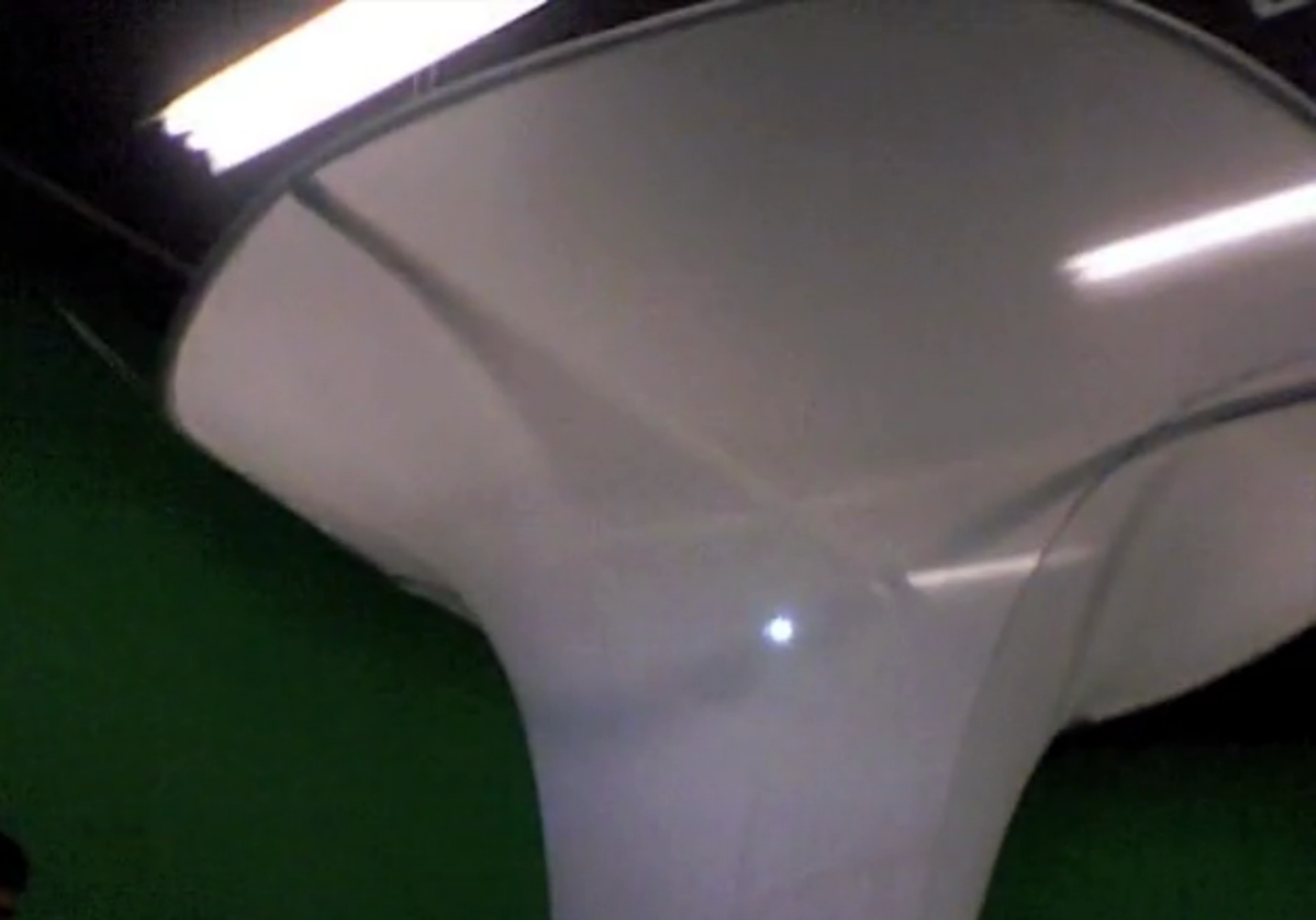
The project was extremely successful, ranking among the top projects in the class. We were included in an upper-year project exhibition during SFU Surrey’s Open House which attracted many more participants, and after the end of the semester, the installation was salvaged and used in future exhibitions by our professor. For myself, it was an early experience with tangible interaction, body interface and use of metaphors in interaction design, all subjects I would return to in the near future.
- Simon Fraser University - Bachelor of Science, Interactive Arts & Technology (Interaction Design)
- January-April 2008

